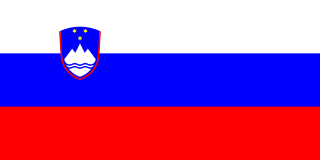| Personal information | ||||||||||||
|---|---|---|---|---|---|---|---|---|---|---|---|---|
| Nationality | South Korean | |||||||||||
| Born | 24 October 1997 | |||||||||||
| Height | 1.80 m (5 ft 11 in) | |||||||||||
| Sport | ||||||||||||
| Sport | Snowboarding | |||||||||||
Medal record
| ||||||||||||
Kweon Lee-jun (born 24 October 1997) is a South Korean snowboarder. He competed in the 2018 Winter Olympics. [1]
| Personal information | ||||||||||||
|---|---|---|---|---|---|---|---|---|---|---|---|---|
| Nationality | South Korean | |||||||||||
| Born | 24 October 1997 | |||||||||||
| Height | 1.80 m (5 ft 11 in) | |||||||||||
| Sport | ||||||||||||
| Sport | Snowboarding | |||||||||||
Medal record
| ||||||||||||
Kweon Lee-jun (born 24 October 1997) is a South Korean snowboarder. He competed in the 2018 Winter Olympics. [1]

Curling was included in the program of the inaugural Winter Olympic Games in 1924 in Chamonix although the results of that competition were not considered official by the International Olympic Committee until 2006. Curling was a demonstration sport at the 1932 Games, and then again after a lengthy absence in 1988 and 1992. The sport was finally added to the official program for the 1998 Games in Nagano.

Canada has competed at every Winter Olympic Games, and has won at least one medal each time. By total medals, the country's best performance was in the 2018 Winter Olympic Games where Canadian athletes won 29 medals. Canada set a new record for most gold medals won by a country in a single Winter Olympics with 14 at the 2010 Winter Olympics in Vancouver, Canada. This achievement surpassed the previous record of 13 gold medals held by the Soviet Union (1976) and Norway (2002). Both Germany and Norway matched the record total of 14 gold medals in Pyeongchang in 2018. This record has since been surpassed by Norway with 16 at the 2022 Winter Olympics.

Snowboarding is a sport at the Winter Olympic Games. It was first included in the 1998 Winter Olympics in Nagano, Japan. Snowboarding was one of five new sports or disciplines added to the Winter Olympic program between 1992 and 2002, and was the only one not to have been a previous medal or demonstration event. In 1998, four events, two for men and two for women, were held in two specialities: the giant slalom, a downhill event similar to giant slalom skiing; and the half-pipe, in which competitors perform tricks while going from one side of a semi-circular ditch to the other. Canadian Ross Rebagliati won the men's giant slalom and became the first athlete to win a gold medal in snowboarding. Rebagliati was briefly stripped of his medal by the International Olympic Committee (IOC) after testing positive for marijuana. However, the IOC's decision was reverted following an appeal from the Canadian Olympic Association. For the 2002 Winter Olympics, giant slalom was expanded to add head-to-head racing and was renamed parallel giant slalom. In 2006, a third event, the snowboard cross, was held for the first time. In this event, competitors race against each other down a course with jumps, beams and other obstacles. On July 11, 2011, the International Olympic Committee's Executive Board approved the addition of Ski and Snowboard Slopestyle to the Winter Olympics roster of events, effective in 2014. The decision was announced via press conference from the IOC's meeting in Durban, South Africa. A fifth event, parallel slalom, was added only for 2014. Big air was added for 2018.

Luge is a winter sport featured at the Winter Olympic Games where a competitor or two-person team rides a flat sled while lying supine and feet first. The sport is usually contested on a specially designed ice track that allows gravity to increase the sled's speed. The winner normally completes the route with the fastest overall time. It was first contested at the 1964 Winter Olympics, with both men's and women's events and a doubles event. Doubles is technically considered an open event since 1994, but only men have competed in it. German lugers have dominated the competition, winning 87 medals of 153 possible.

Short-track speed skating has been a contest at the Winter Olympics since the 1992 Winter Games in Albertville, France. Prior to that, it was a demonstration sport at the 1988 games. The results from the 1988 demonstration competition are not included in the official Olympic statistics. The sport has been dominated by teams from East Asia and North America, namely South Korea, China, Canada and the United States. Those four countries have won 147 of 195 medals awarded since 1992. South Korea leads the medal tally, with 53 medals including 26 golds since 1992. The majority of medals that South Korea and China have won at the Winter Olympics come from short-track speed skating.

Cross-country skiing has been contested at the Winter Olympic Games since the first Winter Games in 1924 in Chamonix, France. The women's events were first contested at the 1952 Winter Olympics.

Slovenia first participated as an independent nation at the Olympic Games at the 1992 Winter Olympics in Albertville, France, and the country has sent athletes to compete at every Games since then. The Slovenian Olympic Committee was established in 1991 and was recognised by the International Olympic Committee on 5 February 1992.

South Korea competed at the 2008 Summer Paralympics in Beijing, China. The country's delegation consisted of 79 competitors and 54 officials.

Mario & Sonic at the Olympic Winter Games is a 2009 sports and party game developed by Sega. Like its predecessor, it was published by Nintendo for Japan and Korea and by Sega in the Western world. The game is officially licensed by the International Olympic Committee (IOC) through exclusive license International Sports Multimedia. The game is the third official crossover title to feature characters from both Mario and Sonic's respective universes, the first and second being the game's predecessor Mario & Sonic at the Olympic Games and Super Smash Bros. Brawl respectively. It was released on the Wii and the Nintendo DS in October 2009, and is the first official video game of the 2010 Winter Olympic Games.
Kang Moon-kweon is a South Korean field hockey player who competed in the 2008 and 2012 Summer Olympics. His twin brother, Kang Moon-kyu, is also an Olympic field hockey player.
Kang Moon-kyu is a South Korean field hockey player. At the 2012 Summer Olympics, he competed for the national team in the men's tournament. His twin brother, Kang Moon-kweon, is also an Olympic field hockey player.
Kweon Han-Jin is a South Korean football player who plays for Incheon United.
During the closing ceremony of the 2018 Winter Olympics in Pyeongchang, the flag bearers of 92 National Olympic Committees (NOCs) arrived into Pyeongchang Olympic Stadium on February 25. The flag bearers from each participating country entered the stadium informally in single file, and behind them marched all the athletes. The flags of each country were not necessarily carried by the same flag bearer as in the opening ceremony. The flag-bearers entered in ganada order of the Korean alphabet.
These were the team rosters of the nations participating in the men's ice hockey tournament of the 2018 Winter Olympics. Each team was permitted a roster of 22 skaters and 3 goaltenders.
These were the team rosters of the nations participating in the women's ice hockey tournament of the 2018 Winter Olympics.

Kweon Young-jun is a South Korean right-handed épée fencer and 2021 team Olympic bronze medalist.